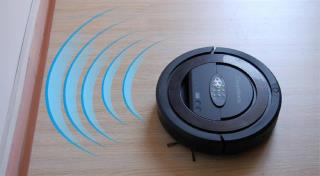Jak nainstalovat BigTree CMS na Fedora 26 LAMP VPS
Používáte jiný systém? BigTree CMS 4.2 je rychlý a lehký, bezplatný a open source podnikový systém pro správu obsahu (CMS) s rozsáhlým
Paste 2.1 is a simple and flexible, free and open source pastebin application for storing code, text and more. It was initially forked from the freely available original source code used by pastebin.com before the domain was sold in 2010. Since that time, the Paste developers have added lots of improvements and features such as a featureful Admin Dashboard with site statstics and settings, IP and user bans, the ability to selectively delete pastes, user accounts with social integration, profile pages, and all of the usual extras such as syntax highlighting for the majority of languages, configurable paste limits and much more.
In this tutorial we are going to install Paste 2.1 on a Fedora 26 LAMP VPS using Apache web server, PHP 7.1, and a MariaDB database.
We will start by adding a new sudo user.
First, log into your server as root:
ssh root@YOUR_VULTR_IP_ADDRESS
Add a new user called user1 (or your preferred username):
useradd user1
Next, set the password for the user1 user:
passwd user1
When prompted, enter a secure and memorable password.
Now check the /etc/sudoers file to make sure that the sudoers group is enabled:
visudo
Look for a section like this:
%wheel ALL=(ALL) ALL
Make sure it is uncommented. This line tells us that users who are members of the wheel group can use the sudo command to gain root privileges.
Once you have edited the file, you can save and exit by pressing Esc and then entering :wq to "write" and "quit" the file.
Next we need to add user1 to the wheel group:
usermod -aG wheel user1
We can verify the user1 group membership and check that the usermod command worked with the groups command:
groups user1
Now use the su command to switch to the new sudo user user1 account:
su - user1
The command prompt will update to indicate that you are now logged into the user1 account. You can verify this with the whoami command:
whoami
Now restart the sshd service so that you can login via ssh with the new non-root sudo user account you have just created:
sudo systemctl restart sshd
Exit the user1 account:
exit
Exit the root account (which will disconnect your ssh session):
exit
You can now ssh into the server instance from your local host using the new non-root sudo user user1 account:
ssh user1@YOUR_VULTR_IP_ADDRESS
If you want to execute sudo without having to type a password every time, then open the /etc/sudoers file again, using visudo:
sudo visudo
Edit the section for the wheel group so that it looks like this:
%wheel ALL=(ALL) NOPASSWD: ALL
Please note: Disabling the password requirement for the sudo user is not a recommended practice, but it is included here as it can make server configuration much more convenient and less frustrating, especially during longer systems administration sessions. If you are concerned about the security implications, you can always revert the configuration change to the original after you finish your administration tasks.
Whenever you want to log into the root user account from within the sudo user account, you can use one of the following commands:
sudo -i
sudo su -
You can exit the root account and return back to your sudo user account any time by simply typing:
exit
Before installing any packages on the Fedora server instance, we will first update the system.
Make sure you are logged in to the server using a non-root sudo user and run the following command:
sudo dnf -y update
Install the Apache web server:
sudo dnf -y install httpd
Then use the systemctl command to start and enable Apache to execute automatically at boot time:
sudo systemctl enable httpd
sudo systemctl start httpd
Check your Apache configuration file to ensure that the DocumentRoot directive points to the correct directory:
sudo vi /etc/httpd/conf/httpd.conf
The DocumentRoot configuration option will look like this:
DocumentRoot "/var/www/html"
Now, let's make sure that the mod_rewrite Apache module is loaded. We can do this by searching the Apache base modules configuration file for the term "mod_rewrite".
Open the file:
sudo vi /etc/httpd/conf.modules.d/00-base.conf
Search for the term mod_rewrite.
If the mod_rewrite Apache module is loaded, you will find a configuration line looking like this:
LoadModule rewrite_module modules/mod_rewrite.so
If the above line starts with a semi-colon, you will need to remove the semi-colon to uncomment the line and load the module. This, of course, applies to any other required Apache modules too.
We now need to edit Apache's default configuration file so that mod_rewrite will work correctly with the Paste app.
Open the file:
sudo vi /etc/httpd/conf/httpd.conf
Then find the section that starts with <Directory "/var/www/html"> and change AllowOverride none to AllowOverride All. The end result (with all comments removed) will look something like this:
<Directory "/var/www/html">
Options Indexes FollowSymLinks
AllowOverride All
Require all granted
</Directory>
Now save and close the Apache configuration file.
We will restart Apache at the end of this tutorial, but restarting Apache regularly during installation and configuration is certainly a good habit, so let's do it now:
sudo systemctl restart httpd
We now need to open the default HTTP and HTTPS ports as they will be blocked by firewalld by default.
Open the firewall ports:
sudo firewall-cmd --permanent --add-port=80/tcp
sudo firewall-cmd --permanent --add-port=443/tcp
Reload the firewall to apply the changes:
sudo firewall-cmd --reload
You will see the word success displayed in your terminal after each successful firewall configuration command.
We can quickly verify that the Apache HTTP port is open by visiting the IP address or domain of the server instance in a browser:
http://YOUR_VULTR_IP_ADDRESS/
You will see the default Apache web page in your browser.
SELinux stands for "Security Enhanced Linux". It is a security enhancement to Linux which allows users and administrators more control over access control. It is enabled by default in Fedora 26, but it is definitely not essential for server security as many Linux server distributions do not ship with it installed or enabled by default.
To avoid file permission problems with Paste later down the line, we are going to disable SELinux, for now. So open the SELinux configuration file with your favourite terminal editor:
sudo vi /etc/selinux/config
Change SELINUX=enforcing to SELINUX=disabled and then save the file.
To apply the configuration change, SELinux requires a server reboot, so you can either restart the server using the Vultr control panel or you can simply use the shutdown command:
sudo shutdown -r now
When the server reboots, your SSH session will get disconnected and you may see a message informing you about a 'broken pipe' or 'Connection closed by remote host'. This is nothing to worry about, simply wait for 20 seconds or so and then SSH back in again (with your own username and domain):
ssh user1@YOUR_DOMAIN
Or (with your own username and IP address):
ssh user1@YOUR_VULTR_IP_ADDRESS
Once you have logged back in, you should check the status of SELinux again with the sestatus command to make sure it is properly disabled:
sudo sestatus
You should see a message saying SELinux status: disabled. If you see a message saying SELinux status: enabled (or something similar) you will need to repeat the above steps and ensure that you properly restart your server.
We can now install PHP 7.1 along with all of the necessary PHP modules required by Paste:
sudo dnf -y install php php-mysqlnd php-mbstring php-gd php-common php-pdo php-pecl-imagick php-xml php-zip
Fedora 26 defaults to using MariaDB database server, which is an enhanced, fully open source, community developed, drop-in replacement for MySQL server.
Install MariaDB database server:
sudo dnf -y install mariadb-server
Start and enable MariaDB server to execute automatically at boot time:
sudo systemctl enable mariadb
sudo systemctl start mariadb
Secure your MariaDB server installation:
sudo mysql_secure_installation
The root password will be blank, so simply hit enter when prompted for the root password.
When prompted to create a MariaDB/MySQL root user, select "Y" (for yes) and then enter a secure root password. Simply answer "Y" to all of the other yes/no questions as the default suggestions are the most secure options.
Log into the MariaDB shell as the MariaDB root user by running the following command:
sudo mysql -u root -p
To access the MariaDB command prompt, simply enter the MariaDB root password when prompted.
Run the following queries to create a MariaDB database and database user for Paste:
CREATE DATABASE paste_db CHARACTER SET utf8 COLLATE utf8_general_ci;
CREATE USER 'paste_user'@'localhost' IDENTIFIED BY 'UltraSecurePassword';
GRANT ALL PRIVILEGES ON paste_db.* TO 'paste_user'@'localhost';
FLUSH PRIVILEGES;
EXIT;
You can replace the database name paste_db and username paste_user with something more to your liking, if you prefer. Also, make sure that you replace "UltraSecurePassword" with an actually secure password.
Change your current working directory to the default web directory:
cd /var/www/html/
If you get an error message saying something like 'No such file or directory' then try the following command:
cd /var/www/ ; sudo mkdir html ; cd html
Your current working directory will now be: /var/www/html/. You can check this with the pwd (print working directory) command:
pwd
Now use wget to download the Paste installation package:
sudo wget --content-disposition https://sourceforge.net/projects/phpaste/files/latest/download?source=files
Please note: You should definitely check for the most recent version by visiting the Paste download page.
List the current directory to check that you have successfully downloaded the file:
ls -la
Let's quickly install unzip so we can unzip the file:
sudo dnf -y install unzip
Now uncompress the zip archive:
sudo unzip paste-2.1.zip
Change ownership of the web files to avoid any permissions problems:
sudo chown -R apache:apache * ./
Restart Apache again:
sudo systemctl restart httpd
Now we're ready to move on to the final step.
It's time to visit the IP address of your server instance in your browser, or if you've already configured your Vultr DNS settings (and given it enough time to propagate) you can simply visit your domain instead.
To access the Paste installation page, enter your Vultr instance IP address into your browser address bar, followed by /install/:
http://YOUR_VULTR_IP_ADDRESS/install/
Most of the installation options are self explanatory, but here are a few pointers to help you along:
Ensure that the Pre-installation checks are all green. Specifically, the following 3 files must be writable:
config.php
tmp/temp.tdata
sitemap.xml
Enter the following DATABASE INFORMATION:
Hostname: localhost
Database Name: paste_db
Username: paste_user
Password: UltraSecurePassword
Make a note of the key value and store it in a safe place, then click Install to continue.
Enter the following Administrator details:
Username: admin
Password: <secure admin password>
Click Submit to finalize the installation.
To access the admin section simply click on the dashboard button and enter your username and password. If you aren't redirected to the admin login page, you can enter the admin address manually:
http://YOUR_VULTR_IP_ADDRESS/admin/
For security reasons, make sure you delete the /install/ directory from the webroot directory:
sudo rm -rf ./install
If you get an error message when trying to delete the /install/ directory, simply change the permissions of the webroot and try again:
sudo chmod 755 .
sudo rm -rf ./install
You are now ready to start administering your own personal pastebin site.
Používáte jiný systém? BigTree CMS 4.2 je rychlý a lehký, bezplatný a open source podnikový systém pro správu obsahu (CMS) s rozsáhlým
Používáte jiný systém? Koel je jednoduchá webová osobní aplikace pro streamování zvuku napsaná ve Vue na straně klienta a Laravel na straně serveru. Koe
Používáte jiný systém? Grav je open source plochý CMS napsaný v PHP. Zdrojový kód Grav je veřejně hostován na GitHubu. Tato příručka vám ukáže, jak t
Používáte jiný systém? Akaunting je bezplatný, open source a online účetní software určený pro malé podniky a živnostníky. Je postaven s vtipem
Používáte jiný systém? Tiny Tiny RSS Reader je bezplatný a otevřený zdroj s vlastním hostitelem webového zdroje zpráv (RSS/Atom) a agregátorem určeným pro
Používáte jiný systém? InvoicePlane je bezplatná a open source fakturační aplikace. Jeho zdrojový kód lze nalézt na tomto úložišti Github. Tento průvodce
Používáte jiný systém? V tomto tutoriálu vás provedu nastavením serveru Minecraft na vysoce výkonném SSD VPS na Vultr. Naučíte se ho
Používáte jiný systém? NGINX lze použít jako HTTP/HTTPS server, reverzní proxy server, poštovní proxy server, vyrovnávání zatížení, TLS terminátor nebo mezipaměť
Používáte jiný systém? Pagekit 1.0 CMS je krásný, modulární, rozšiřitelný a lehký, bezplatný a open source systém správy obsahu (CMS) s
Používáte jiný systém? Subrion 4.1 CMS je výkonný a flexibilní open source systém správy obsahu (CMS), který přináší intuitivní a jasný obsah
Používáte jiný systém? TaskWarrior je open source nástroj pro správu času, který je vylepšením aplikace Todo.txt a jejích klonů. Vzhledem k th
Používáte jiný systém? CMS Made Simple 2.2 je flexibilní a rozšiřitelný, bezplatný a open source systém správy obsahu (CMS) inteligentně navržený tak, aby
Používáte jiný systém? Úvod Bro je open-source analyzátor síťového provozu. Je to především bezpečnostní monitor, který kontroluje veškerý provoz na lince
Používáte jiný systém? X-Cart je extrémně flexibilní open-source platforma elektronického obchodu se spoustou funkcí a integrací. Zdrojový kód X-Cart je hostitel
Používáte jiný systém? Matomo (dříve Piwik) je open source analytická platforma, otevřená alternativa k Google Analytics. Zdroj Matomo je hostován o
Používáte jiný systém? MyBB je bezplatný a open source, intuitivní a rozšiřitelný program fóra. Zdrojový kód MyBB je hostován na GitHubu. Tento průvodce bude sho
Používáte jiný systém? Úvod TaskBoard je bezplatný a open source nástroj, který lze použít ke sledování věcí, které je třeba udělat. Poskytuje
Používáte jiný systém? LimeSurvey je open source průzkumový program napsaný v PHP. Zdrojový kód LimeSurvey je hostován na GitHubu. Tento průvodce vám to ukáže
Používáte jiný systém? Backdrop CMS 1.8.0 je jednoduchý a flexibilní, mobilní, bezplatný a open source systém správy obsahu (CMS), který nám umožňuje
Používáte jiný systém? Craft CMS je open source CMS napsaný v PHP. Zdrojový kód CMS CMS je hostován na GitHubu. Tato příručka vám ukáže, jak nainstalovat
Umělá inteligence není v budoucnosti, je zde přímo v současnosti V tomto blogu si přečtěte, jak aplikace umělé inteligence ovlivnily různé sektory.
Jste také obětí DDOS útoků a nemáte jasno v metodách prevence? Chcete-li vyřešit své dotazy, přečtěte si tento článek.
Možná jste slyšeli, že hackeři vydělávají spoustu peněz, ale napadlo vás někdy, jak takové peníze vydělávají? Pojďme diskutovat.
Chcete vidět revoluční vynálezy Google a jak tyto vynálezy změnily život každého dnešního člověka? Pak si přečtěte na blogu a podívejte se na vynálezy od Googlu.
Koncept aut s vlastním pohonem, která vyrazí na silnice s pomocí umělé inteligence, je snem, který už nějakou dobu máme. Ale přes několik slibů nejsou nikde vidět. Přečtěte si tento blog a dozvíte se více…
Jak se věda vyvíjí rychlým tempem a přebírá mnoho našeho úsilí, stoupá také riziko, že se vystavíme nevysvětlitelné singularitě. Přečtěte si, co pro nás může znamenat singularita.
Způsoby ukládání dat se mohou vyvíjet od narození dat. Tento blog se zabývá vývojem ukládání dat na základě infografiky.
Přečtěte si blog, abyste co nejjednodušším způsobem poznali různé vrstvy v architektuře velkých dat a jejich funkce.
V tomto digitálním světě se chytrá domácí zařízení stala klíčovou součástí života. Zde je několik úžasných výhod chytrých domácích zařízení o tom, jak náš život stojí za to žít a zjednodušit jej.
Apple nedávno vydal doplňkovou aktualizaci macOS Catalina 10.15.4, která opravuje problémy, ale zdá se, že aktualizace způsobuje další problémy, které vedou k zablokování počítačů mac. Přečtěte si tento článek a dozvíte se více



